Spain’s Sado-Monetarism: Will it Lead to Revolution? – Part I
The facts
As a measure of austerity supposedly meant to rescue Spanish economy, stifled by the debt and by a deep recession, on July 10, 2012, Prime Minister Mariano Rajoy announced a set of public spending cuts and tax increases amounting to €65 billion in two years and a half. The cuts are affecting key sectors like education and health service; the tax increase is boosting the prices of food, medicines, transport, and leisure. The retirement age will be extended as many are forced to retire earlier.
The day after the introduction of the austerity measures, an outburst of indignation shook the country. Thousands of citizens marched through the streets of its main cities: Madrid, Barcelona, Valencia, Bilbao, Pamplona, Seville, Málaga. In spite of the efforts made by a criminal police repression to label the protesters as violent criminals, actually a huge number of them were public sector workers, retired people, teachers, health workers, cultural activists, “rebel” policemen and firemen who do not stand by the side of an abusive government. The protests targeted the huge sacrifices imposed on the people who are already facing an unsustainable situation, with wages that are among the lowest in Europe and an unemployment rate that exceeds 25 percent of the total work force — over 50 percent of the youth. The unemployed also suffered the consequences of these cutbacks since even the subsidies they receive were reduced.
Many of the manifestations turned into violent riots, feeding fears about the opening of a new era of political unrest and turmoil until maybe another civil war will ensue. However, as will be pointed out in the next paragraphs, Capitalism has learned how to maintain people in a state of submission and precariousness, preventing them from falling beneath the critical level below which they would be classified as poor, as proletarians, and strive to get out from their low status and take their rights back. That would be the end since, as the Capital learned both from history and from Marx’s works, revolution is done by empty bellies. However, capitalism has been able to establish a political system in which a fake democracy gives the people the illusion of choosing between a left- and a right-wing candidate: both of them proposing impossible things during their campaigns. Once elected, independently from their faction, these politicians do nothing to boost the economy but feed the chests of those very same institution that are strangling it and benefiting from recession. They rescue the banks that triggered the crisis, profiting of the neoliberal wave of deregulation which allowed them to offer great loans at huge interest rates to people who — as they perfectly knew — would not be able to repay them. Those people are returning to the banks their properties after they paid part of the mortgage, and they still have to pay the rest of the debt.
Learned helplessness
Renowned columnist Paul Krugman of the New York Times, in the May 29, 2012 issue, published a brilliant article titled “Against Learned Helplessness”. [1]
The phenomenon of learned helplessness was discovered quite by chance by the American psychologist Martin Seligman in 1967 while he was analyzing animal behavior. He repeatedly exposed some animals to painful stimuli without giving them the opportunity to avoid them. When the animals were given the opportunity to escape to a safe zone, they did nothing but stay where they were, whine and offer a passive resistance. In a similar way — Seligman found out later — when human beings are submitted for too much time to adverse situations, they tend to lose the ability to manage them: instead of reacting, they are paralyzed by the sensation that they cannot do nothing — believing themselves to be ineffective or unworthy — and develop a depressive state.
The concept of learned helplessness was recently applied to unemployed people who, after a huge number of useless efforts to find a job, get discouraged and start attributing their failure to their own faults instead of the perverse dynamics of an economic system that ignores them and their needs; an economic system — as we’re going to demonstrate — that is even capable to exploit high unemployment rates to bolster macroeconomics’ obscure mechanisms instead of offering adequate job opportunities.
The governments of the contemporary Western world, accomplices to these vile strategies, justify their inability (actually, their lack of will) to tackle the issue of unemployment by putting the blame exactly on the arcane synergies of globalized markets.
Almost 14 million Americans are jobless; more than one on four Spaniards are out of work. However, ‘on both sides of the Atlantic, a consensus has emerged among movers and shakers that nothing can or should be done about jobs. Instead of a determination to do something about the ongoing suffering and economic waste, one sees a proliferation of excuses for inaction, garbed in the language of wisdom and responsibility,’ [1] writes Krugman.
And while the governments’ learned helplessness is functional to its inactivity, people’s learned helplessness is the result of a painful situation cynically exploited by capitalism.
As Michael Perelman states in an excellent article appeared on the April 2012 issue of the Monthly Review, “A recent study […] concluded that ‘a baseless fear of full employment,’ rather than the prevention of inflation, was the guiding principal of the Federal Reserve. The conclusion of this study should come as little surprise to people familiar with the Federal Reserve’s obsession with the danger of high wages.
“Defenders of such policies justify the temporary restriction of job creation, contending that the Federal Reserve is merely trying to curb excessive growth. According to this school of thought, the Federal Reserve is simply preventing the kind of excesses that lead to severe recessions or depressions. Slowing down growth today may be necessary to provide for a higher sustainable growth rate in the future. […]
“In fact, according to a study by the Bank for International Settlements, slowdowns actually seem to diminish, rather than promote, long-term growth.” [2]
The exploitation of unemployment to weaken workers’ power of negotiation was cynically theorized by John Maynard Keynes in 1925: “the object of credit restriction […] is to withdraw from employers the financial means to employ labour at the existing level of wages and prices. The policy can only attain its end by intensifying unemployment without limit, until the workers are ready to accept the necessary reduction of money wages under the pressure of hard facts.” [3]
As we can see, indeed finance has a subtle way to induce workers to accept a worst, unjust economic treatment: it puts them in the condition of developing learned helplessness since they make useless attempts to find a job for months, even years: they will be prone to every abuse by their employers. Nobody knows it better than the Spanish people: the Capital has all the interest in maintaining “a level of unemployment high enough to keep workers fearful of losing their jobs.” [2]
Perelman’s article also offers an amazing description of learned helplessness applied to labor market: “Psychologists have found that people who have lost a limb are naturally unhappy about their condition, but, after a while, they return to their previous level of happiness. But the unemployed do not.” [2]
Richard Layard, a highly respected British economist, recently highlighted: “it hurts as much after one or two years of unemployment as it does at the beginning. In that sense you do not habituate to it […]. And even when you are back at work, you still feel its effects as a psychological scar.” [4]
Federal Reserve chairman Alan Greenspan has even introduced—exalting it!—the concept of “traumatized worker” as an employed worker who dreads the possibility of being sacked and remaining trapped in the gloomy net of unemployment.
To summarize: a high unemployment rate tames workers, who are scared of losing their jobs, never finding another one. Moreover, workers know well enough that, in the present economical downturn, if ever they find a new job after quitting the present, it will unlikely be an equally desirable one: they are exposed to a downward mobility.
This state of things offers still another advantage to the Capital: “while one might expect that lower wages would cut into consumer demand, according to a study in the Journal of Consumer Research, ‘people use consumer purchases to compensate for psychological states of insecurity.'” [2]
More debt, more unemployment, more psychologically hurt people, lower wages and more consumerism, a further enrichment of the upper class — the capitalistic élite — and so on, in a maddened spiral.
This climate of learned helplessness caused by the crisis of the labor market is also evoked by Noam Chomsky in an article appeared on May 8th, 2012 in the online newspaper Salon.com. [5] The American linguist and philosopher states that, while the economy produced real “things” that people needed to use; while manufacture and industry still had high production rates, unemployed working people could reasonably anticipate that jobs would come back.
Before the 1970s, growth had been considerable and steady, and the economic system was quite egalitarian: “Banks were banks,” says Chomsky. “They did what banks were supposed to do in a state capitalist economy: they took unused funds from your bank account, for example, and transferred them to some potentially useful purpose like helping a family buy a home or send a kid to college.” However, “When the 1970s came along, there were sudden and sharp changes: Deindustrialization, the off-shoring of production, and the shift to financial institutions. [… I]n the 1950s and 1960s, there was also the development of what several decades later became the high-tech economy.
“The developments that took place during the 1970s set off a vicious cycle. It led to the concentration of wealth increasingly in the hands of the financial sector. […]
“Concentration of wealth yields concentration of political power. And concentration of political power gives rise to legislation that increases and accelerates the cycle. The legislation, essentially bipartisan, drives new fiscal policies and tax changes, as well as the rules of corporate governance and deregulation.” [5]
So, while in America, in Spain, and in all the Western world the majority of population — the 99% in the imagery of the Occupy movement — strives to get by through “longer working hours, high rates of borrowing and debt, and reliance on asset inflation like the recent house bubble,” [5] the wealth concentrates in the hands of the top tenth of one percent: it is this oligarchy that controls the political system.
The very same Alan Greenspan explained the success of the economy he was supervising in 1997 by telling that it was “based substantially on what he called ‘growing worker insecurity.’ If working people are insecure, if they’re part of the precariat, living precarious existences, they’re not going to make demands, they’re not going to try to get better wages, they won’t get improved benefits. We can kick ’em out, if we don’t need ’em. And that’s what’s called a ‘healthy’ economy, technically speaking. And he was highly praised for this, greatly admired.” [5]
The madness of neo-liberalism
Unemployment and low wages also function to maintaining inflation rates low since they imply that there is less money circulating: which keeps the currency value high, favoring global corporations’ interests in the international markets. However, they also cause the withering of small and medium enterprises, that have traditionally been the main motors of Spain’s economy.
The last figures released by the government are appalling: by the month of October, 128,000 more people joined the sad army of the unemployed; the jobless rate rose above 25 percent for the first time in modern Spanish history. Youth unemployment rose above 52 percent, more than triple the average of the developed world. In five of nineteen Spanish regions, the unemployment rate exceeds 30 percent — more than that of the Gaza Strip. Ten per cent — 1.7 million — of households nationwide have all their members out of work.
There are only two safety nets that alleviate this socioeconomic distress: the black economy, that accounts for 25 per cent of the nation’s output, and family networks. The young generation often lives with the parents and from their pension. However, even these nets are tearing: every day it gets more difficult to make ends meet.
As if this were not sad enough, the economists forecast a further shrinking of the Spanish economy and more job losses in the immediate future.
Are we allowed to state that Capitalism is losing control over the situation it created? Unemployment in Spain has surpassed the “physiological” level required by the cynical capitalistic financial strategies; incomes are now below the emergency level and the people have apparently no more reasons to surrender to a system that exploits and abandons them since the safety valves that were offered are now exploding; even the above mentioned learned helplessness risks to be soon replaced by a more active and aggressive reaction since those who have been submitted to it will soon need to face not only a socioeconomic humiliation but also — may we name it? — hunger.
So, is the Spanish crisis a fertile terrain for a revolution? Are the times ripe for a new civil war? To answer this question, we must trace a parallel with the savage butchery that ravaged the Iberian country in the 1930s.
In the second part of the article, the author, A. Marcantonio draws a parallel between the present Spanish context and the events that dragged Spain into a Civil War in the 1930s. After pointing out the analogies and differences between the two historical periods, he gives a Freudo-Marxist assessment of the contemporary situation and predicts a future in which Spanish people could rally and finally opt for revolution, overcoming all the class and clan divisions that had previously permitted the triumph of Fascism.
References
[1] Paul Krugman, “Against Learned Helplessness,” New York Times, May 29, 2012. http://www.nytimes.com/2011/05/30/opinion/30krugman.html?_r=0
[2] Michael Perelman, “Sado-Monetarism. The Role of the Federal Reserve System in Keeping Wages Low,” Monthly Review, volume 63, issue 11, April 2012. http://monthlyreview.org/2012/04/01/sado-monetarism#en1
[3] John Maynard Keynes, “The Economic Consequences of Mr. Churchill (1925),” in Essays in Persuasion, vol. 9: The Collected Works of John Maynard Keynes, ed. Donald Moggridge (London: Macmillan, 1972), 218.
[4] Richard Layard, Happiness: Lessons from a New Science (New York: Penguin Press, 2005), 67.
[5] Noam Chomsky, “Jobs aren’t coming back,” Salon.com, May 8, 2012, http://www.salon.com/2012/05/08/chomsky_jobs_arent_coming_back/
Related Articles






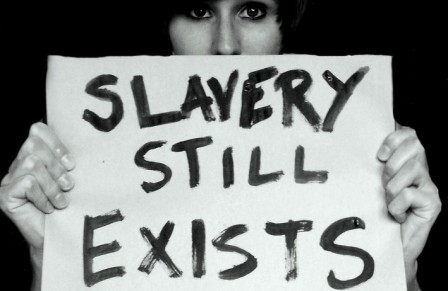
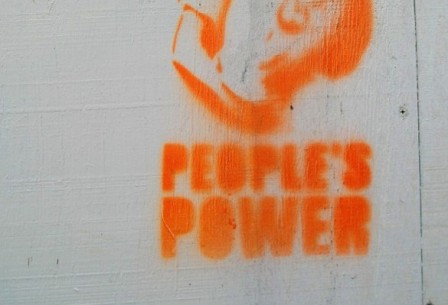
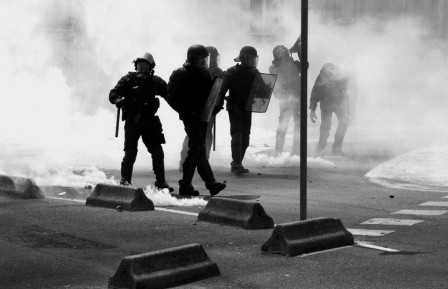

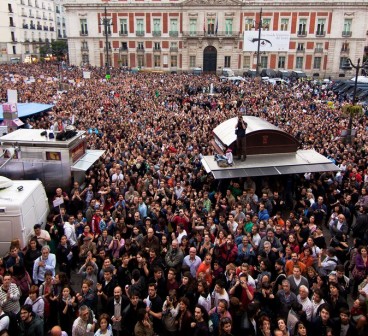

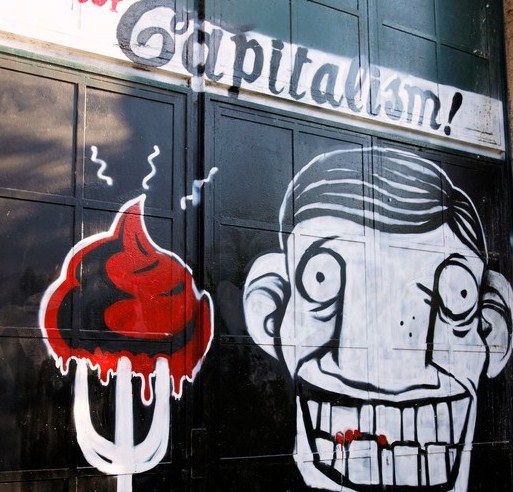











2 Responses to Spain’s Sado-Monetarism: Will it Lead to Revolution? – Part I
You must be logged in to post a comment Login